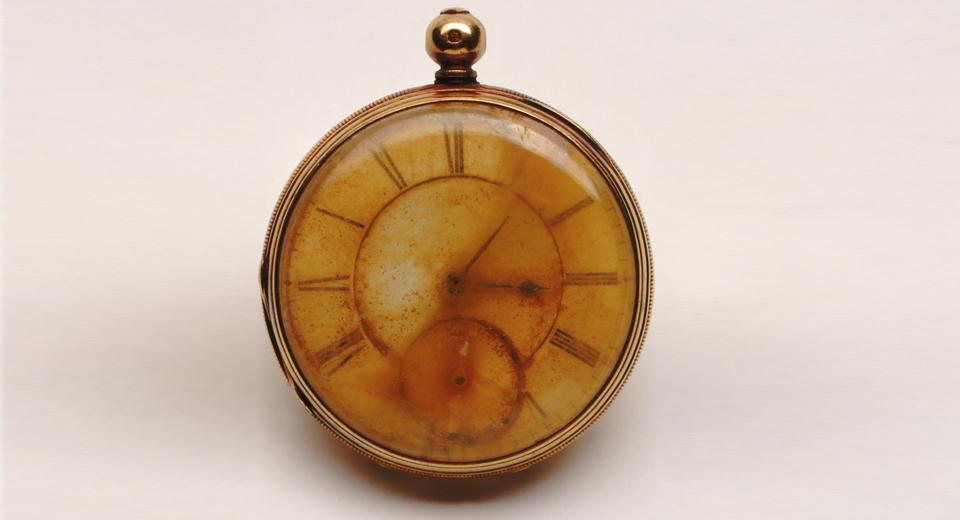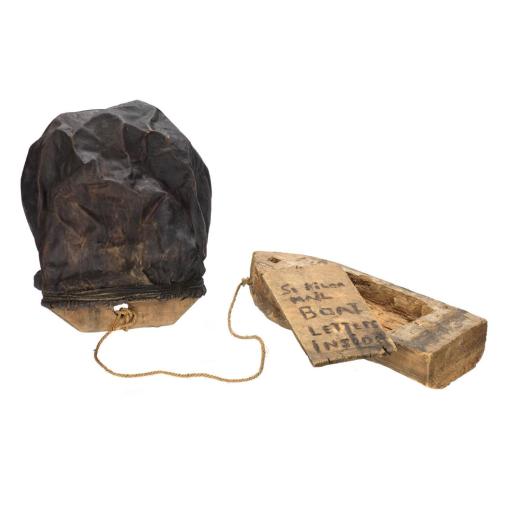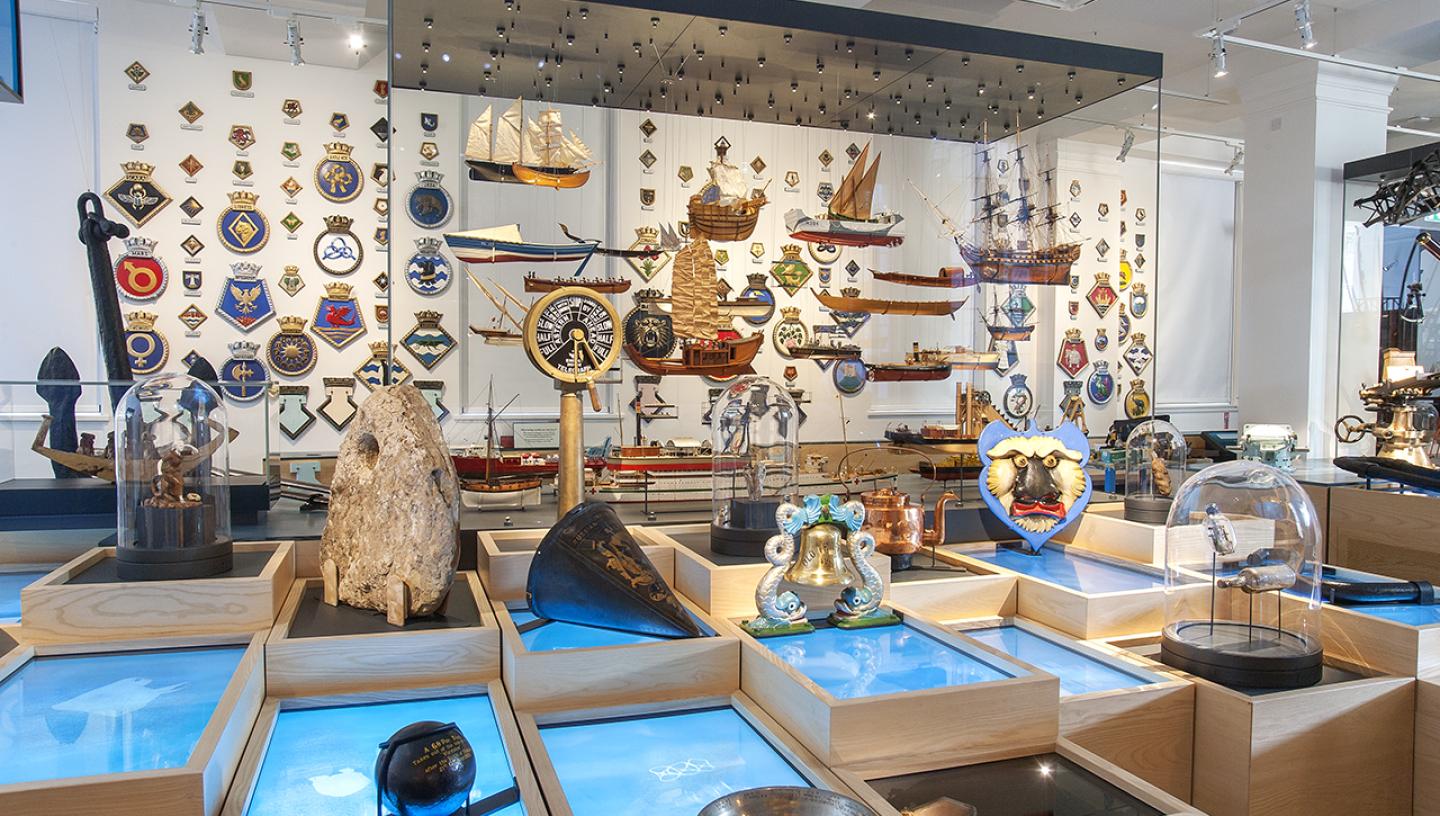
Essential Information
| Location | |
|---|---|
| Price | Free |
For centuries, human identity has been shaped by our relationship with the sea; through work, play, love, loss, hope and despair, the ocean has made us who we are as individuals and societies.
The Sea Things gallery at the National Maritime Museum explores our connection to the sea through surprising objects and interactive exhibits.
Inside the gallery
Explore over 600 fascinating maritime objects, from a carved whale’s tooth to a Roman stone anchor, a pocket watch worn by a victim of the Titanic disaster to an Ancient Egyptian votive ship model – one of the oldest artefacts in the Museum’s collection.
Many of the objects are on open display, meaning you can get up close and touch them. Create your own route around the gallery, finding objects that capture your imagination.
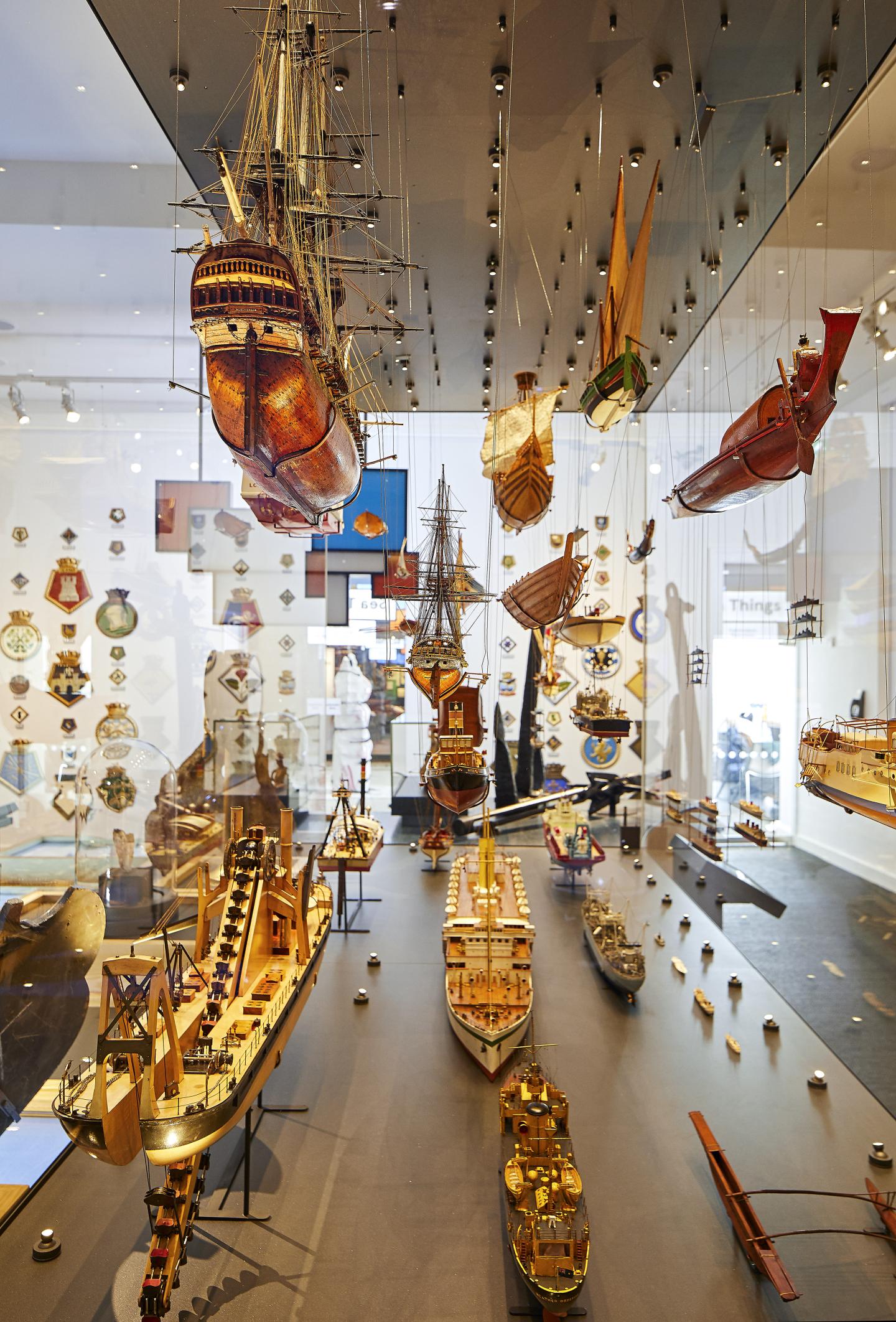
Amongst the treasure trove of objects in the gallery you can see 55 ship models showing a variety of vessels used around the world, a display of over 150 ship badges, sailing and diving equipment, furniture, trinkets, busts, weapons, astronomical instruments and much more.
Visiting Sea Things
Where is the gallery?
Sea Things is a permanent gallery at the National Maritime Museum in Greenwich, located on the first floor of the East Wing. Entry to the Museum is free: book tickets online in advance to guarantee entry and receive updates before you visit.
Tours and audio guides
Sea Things features as part of the range of audio guides available at the National Maritime Museum. Listen to a free introduction to the gallery here, or find out more about objects on display by ordering a special Treasures Tour.
Accessibility
BSL is included as part of the National Maritime Museum audio guide. Large print guides are also available inside the gallery. For more information about accessibility at the National Maritime Museum, click here.
Gallery closures
Occasionally some gallery closures may affect your visit to the National Maritime Museum. Find details of upcoming closures here.
Make the most of your visit
Find more free galleries and attractions at the National Maritime Museum.
Tickets and Opening
Free entry
10am-5pm daily
- Greenwich Station
- Cutty Sark DLR
- Maze Hill Station
- Greenwich Pier
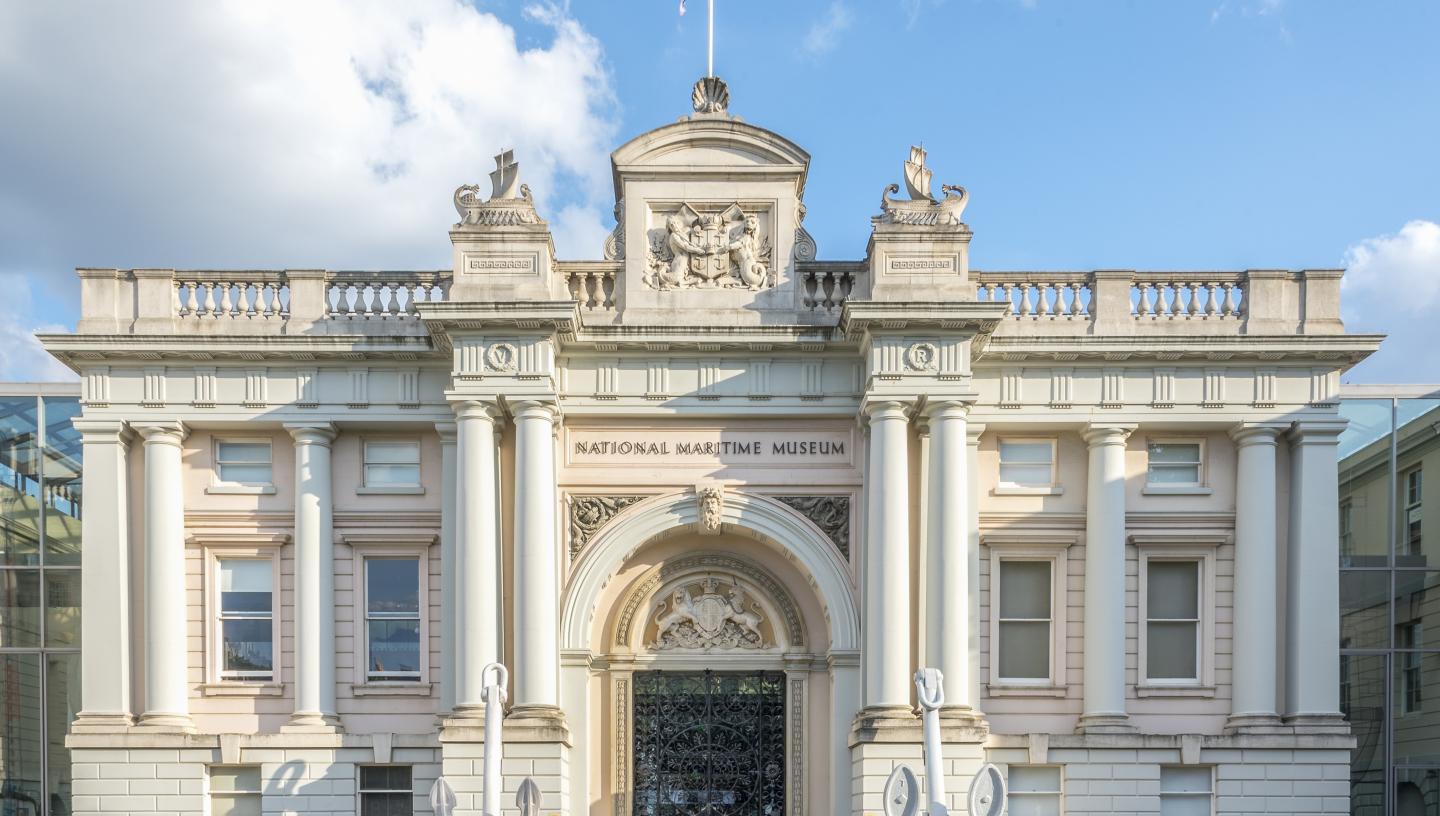
Visit the National Maritime Museum
This gallery is supported by:
- Foyle Foundation
- The DCMS/Wolfson Museums and Galleries Improvement Fund
